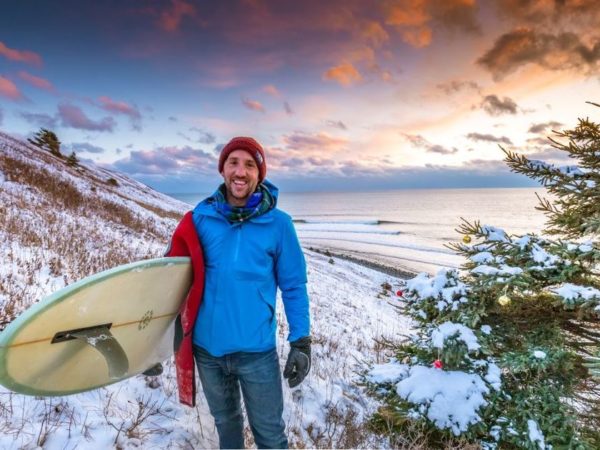
In Nova Scotia, a top cold-water surfing destination, riders paddle into the Atlantic all winter long. Adam Cornick of Acorn Art and Photography
It’s a crisp December day in Nova Scotia, and Jan LaPierre has already been surfing this morning. Yesterday morning too.
It’s hard to resist when you live in a top cold-water surfing destination, where riders paddle into the Atlantic Ocean all winter long.
“Today there was gentle snowfall, no wind, the sun was out. Those are beautiful moments,” says LaPierre, a year-round surfer, champion of all things winter and outdoors, and co-founder of A for Adventure, a company that inspires people to connect with the natural world.
Winter surfing may seem crazy when you’re on the outside looking in, but it’s really special, says LaPierre.
“For some people, it’s their favorite time of year. The waves are more reliable and fewer people are out.”
Why winter surfing? Why Nova Scotia?
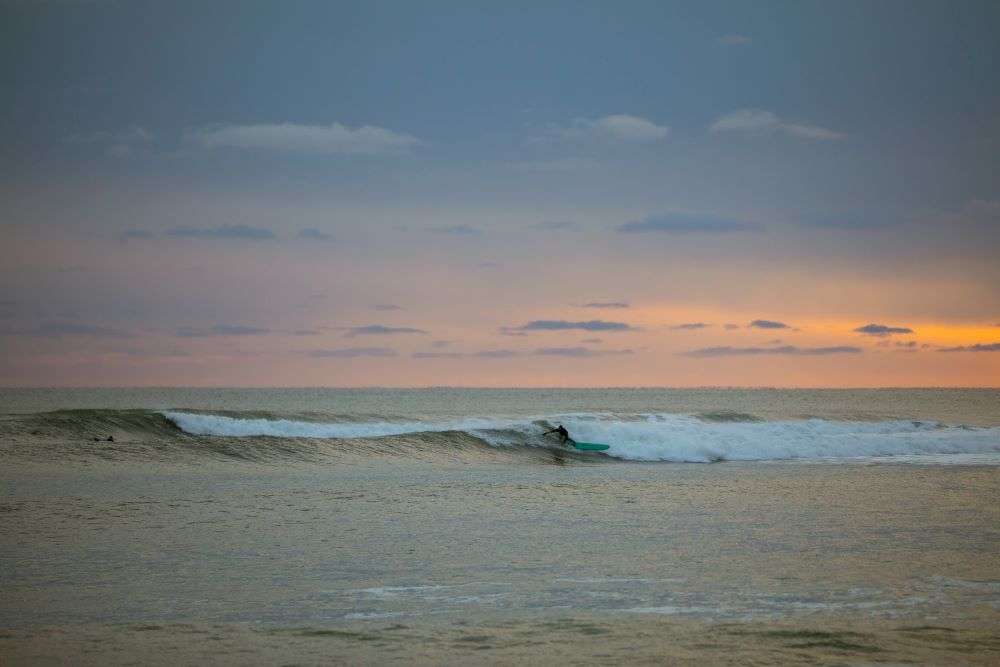
For some people, winter is their favorite time of year to surf in Nova Scotia. The waves are more reliable and fewer people are out. Adam Cornick of Acorn Art and Photography
Nova Scotia with its incredible shoreline, headlands and beaches is home to world-class surf conditions. It’s one of the best beginner surf destinations, with plenty of breaks ranging from novice to pro, big to small waves. And locals are always happy to extend a hand to make the experience more enjoyable. In winter, it gets even better.
Namely, there are more storms. The storms are more intense. And that means big swells—the holy grail surfers are always chasing.
“The biggest thing is the frequency of when there are surfable waves is greater in winter than any other time of year,” says LaPierre.
“We’re known for nor’easters,” he says on the powerful weather systems that roll through North America’s east coast, bringing blowing winds usually from the northeast.
“They bring in typically great waves.”
In winter, it’s not unusual for surfers to be out three or four times a week as opposed to maybe once or twice a week in summer.
Surprised by the surf scene
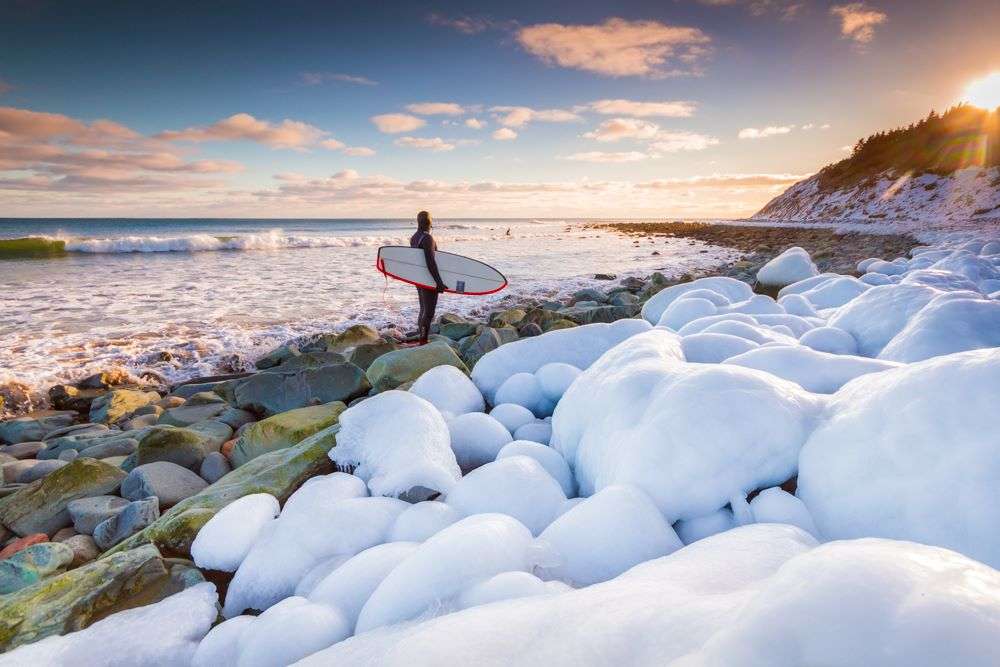
Nova Scotia with its incredible shoreline, headlands and beaches is home to world class surf conditions. It’s one of the best beginner surf destinations, with plenty of breaks ranging from novice to pro, big to small waves. Adam Cornick of Acorn Art and Photography
LaPierre says many people are surprised to learn there is a top surf scene in Nova Scotia, little alone a winter surf scene.
Says Chris Hatt, a longtime avid surfer and university student; “Absolutely people are surprised. Almost everyone that I tell I surf year-round here is always jaw-dropped. When people think of Nova Scotia, the last thing they think of is how extraordinary the surf scene is here, and when I tell them the best time to go is during winter, they can’t believe it.”
“As far as surf locations go, everywhere along the coast of Nova Scotia is a potential surf paradise. With a coast as rich with hidden gems as here, it only takes a little exploring to find your favorite break.”
Aren’t you cold?
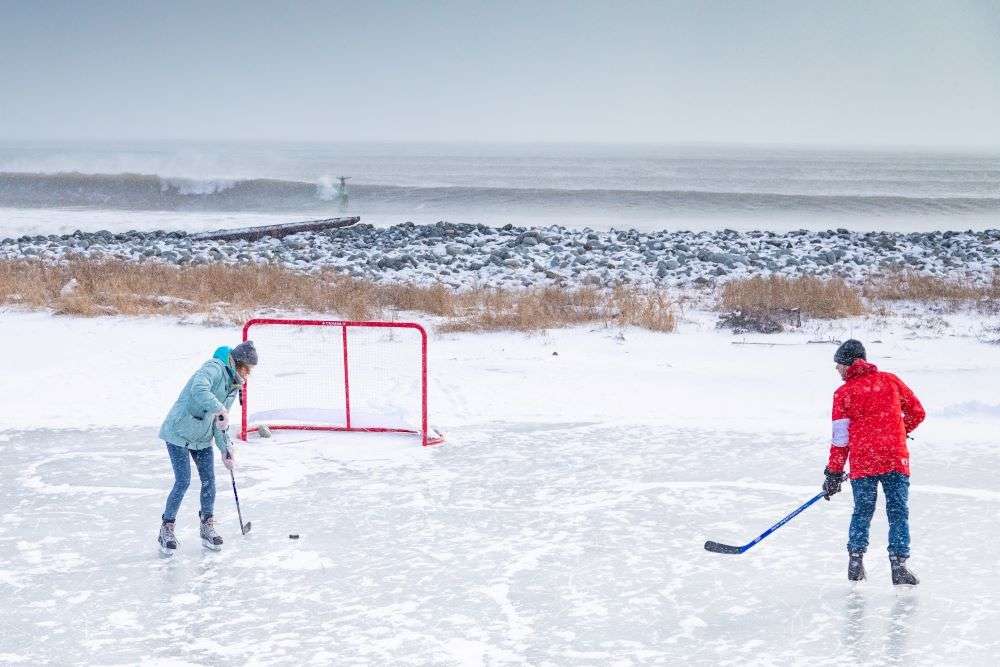
Technology has come a long way. With a good winter wetsuit, you’re really not feeling the temperature. Adam Cornick of Acorn Art and Photography
“People say, ‘you must be crazy,’ but the technology is so good. Believe it or not, you’re probably actually warmer that if you went skating or skiing. The water temperature typically rarely falls below 0 or -1 C,” says LaPierre.
“The technology has come a long way. With a good winter wetsuit, you’re really not feeling the temperature.”
As for air temperature? LaPierre says when it dips down to -15, that’s usually his cutoff point, although he’s surfed in colder temperatures.
The amount of people surfing in winter has exploded 500 per cent of what it used to be 20 years ago, he says. A big piece of this is the advanced technology, and also that it’s just normalized, the idea of surfing in winter.
Exploring the coast
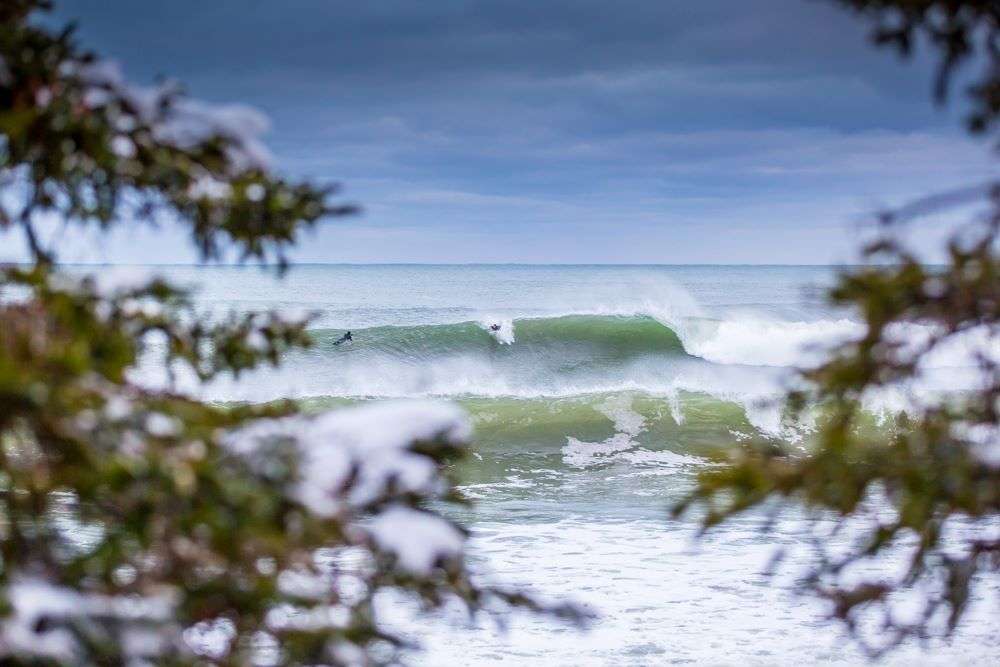
While certain areas of the province have bloomed into well-known surf spots, anywhere there are reliable waves, you’ll probably find pockets of people who are surfing. Adam Cornick of Acorn Art and Photography
While certain areas of Nova Scotia have bloomed into well-known surfing haunts, including Lawrencetown Beach, about a half hour outside Halifax, along the Eastern Shore, the South Shore, and Point Michaud on Cape Breton Island, surfers can be found riding the waves just about everywhere across the province.
“Anywhere there are reliable waves, you’ll probably find pockets of people who are surfing. There are a lot of eyes on it,” says LaPierre.
Hatt says surfing in Nova Scotia promotes exploration and delving onto the back roads to happen upon a perfect wave.
“The winter season makes this adventure all the more rewarding. After hiking through knee-high snow through the woods with nothing but your wetsuit and surfboard when you finally reach the shore and find a curling wave there’s nothing more rewarding.”
Growing community
Those looking to take lessons, or rent gear, have a number of options, such as East Coast Surf School in Lawrencetown Beach, accessible mid-July or mid-January. The school is run by Nico Manos, the first professional surfer to come to come Nova Scotia.
White Point Beach Resort, near Liverpool, and Kannon Beach Surf Shop in Lawrencetown are two more popular spots to take lessons.
Always, always safety
One of the benefits to surfing in Nova Scotia, particularly in winter, is that you’re not sharing the waves with 300 to 400 other riders. Here you can choose to surf with just your best friend, as long as you have the capacity to do it safely, says LaPierre.
Some people can be rather cavalier and don’t know quite how powerful the ocean can be.
“The ocean is a powerful force. It doesn’t take much to get caught up in a rip tide. The ocean has to be respected,” he says. “I always, always go back to that safety aspect.”
What’s the appeal?
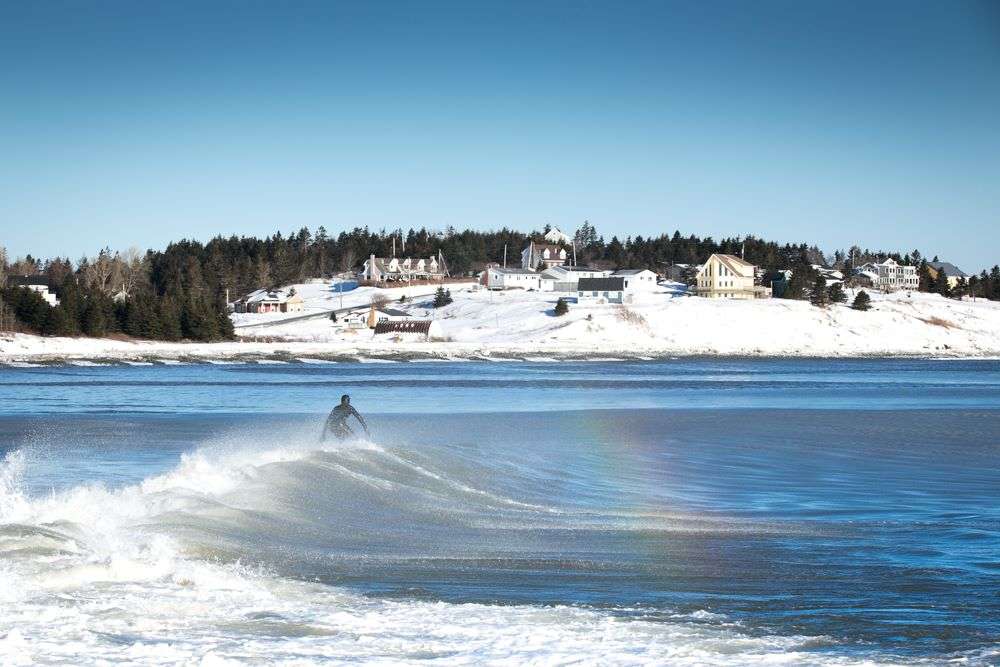
Surfing in Nova Scotia promotes exploration and delving onto the back roads to happen upon a perfect wave. Adam Cornick of Acorn Art and Photography
Surfing has always carried a certain mystique, says LaPierre, who grew up in Nova Scotia, but not near big waves. He remembers in high school when he saw a car drive by with surf boards stacked on the roof. He had recently returned from a trip to Costa Rica where he had tried surfing.
“My friends and I jumped in the car and followed these people all the way to Lawrencetown Beach and saw these big waves…We saw the potential.
“For myself, it’s something that you need to be somewhat humble, when you’re confronting elemental forces…it requires a patience, a thoughtfulness. You do have opportunity to connect with nature in a profound way. I’ve surfed with dolphins, sea turtles, sunfish.
“It appeals to the person who likes to challenge themselves, and who likes to find some rejuvenation.”
Surreal feeling
Hatt says the first time he stood up on a wave, he fell instantly in love. “It was like nothing I’ve ever felt before. The feel of coasting down the face of a wave through the ocean is very surreal. Even though riding a wave is the main reason for surfing, sitting out in the line-up also has a beautiful sensation. It’s almost overwhelming how calming it is. Starring off into the ocean, hearing the seagulls, smelling the ocean air, and watching as seals play no more than a couple meters away, your worries seem to melt away from you and drift off with the current.”





Recent Comments